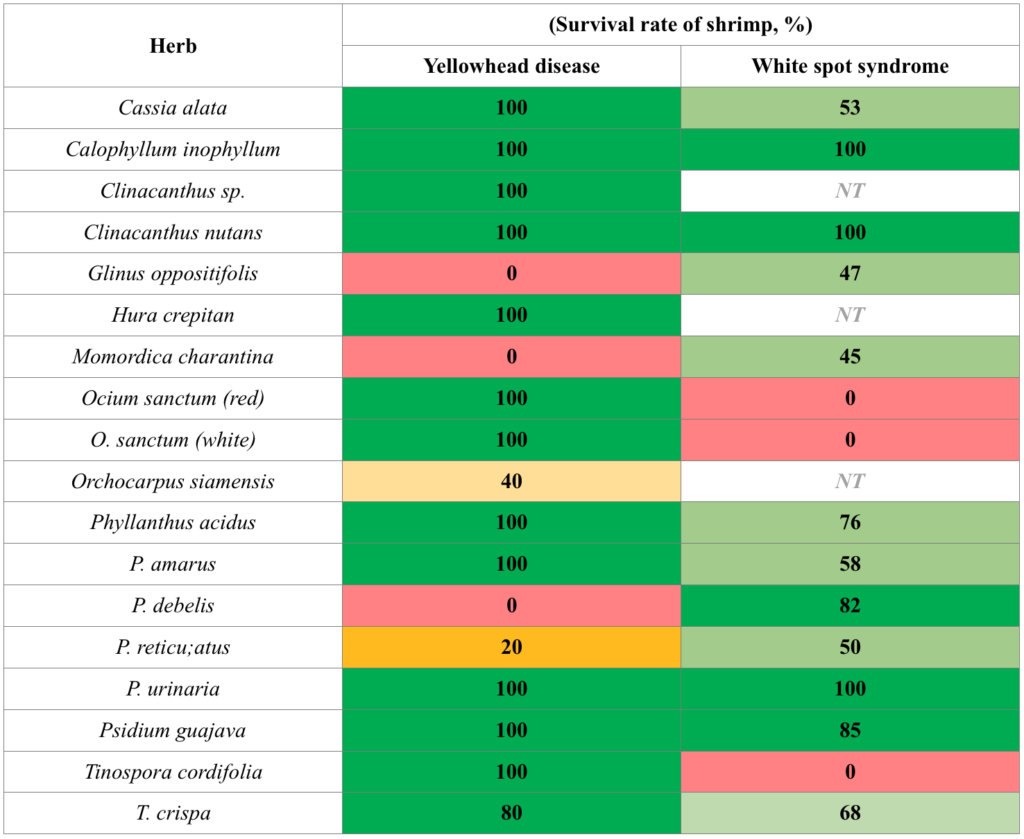Fighting viruses using plants

Certain plant species are natural defence against viruses and bacteria in aquaculture
Asian countries have witnessed the growth of aquaculture in recent years. The ultimate goal is to produce the greatest possible weight per culture unit in most aquacultural operations for culture fish, crustaceans or mollusc.
As aquacultural production becomes more intensive, the incidence of disease including various infectious diseases has increased as a result of it leading to significant economic losses. In classical fish farms as well as in livestock farming, various chemotherapeutic agents, for example, antibiotics, are used to prevent animal diseases that are inevitable in growing conditions..
However, the use of antibiotics inevitably leads to rapid adaptation of pathogenic bacteria to drugs and formation of resistance to them. These resistant bacterias may have a negative impact in terms of not only fish diseases, but also human ones, and harm the environment of the fish farms.
In modern agriculture, “green” methods of combating pests have already found certain popularity. This idea is described in one of our articles and consists in using the natural enemies of pathogenic organisms to “protect” animals or plants that are of agricultural interest to us. This approach also applies to aquaculture.
For examle, herbs have been widely used in veterinary and human medicine. They are natural products that are not only safe for consumers but also widely available throughout Asia.
Rotenone is a traditional herb widely used to kill fish in shrimp ponds, because it is highly toxic for fish even at low concentration and is rapidly degraded in the natural environment. At the same time. effective dose of Rotenone is very small: 50-200 mg/l depending on the purpose of treatment, the fish species present, and condition at the time of application.
There are other well-known antimicrobial and antiviral types of activity of herb extracts: Stellaria aquatica, Impatiens biflora, Oenothera biennis, Artemisia vulgaris and Lonicera japonica. 13 bacterial and 2 viral fish pathogens are very sensitive to these extracts. Among them, Stellaria aquatica was the most effective both in terms of the number of pathogens inhibited and the degree of inhibition. Lonicera japonica also showed some inhibitory action against viruses, which with some probability can be very effective as a potential measure of protection against new strains of viruses, from which there are no chemotherapeutic methods of protection yet.
Effectiveness of different herbs against viral diseases for fish and shrimp

In Vietnam, the Institute of Ecology and Bioresources has undertaken applied research on some medicinal herbs for prophylaxis and treatment of fish and shrimp diseases such as ulcer, intestinal disease, white mouth, white head, red skin, and red spot in fish, and luminescence and brown spot disease in shrimp.
In Thailand, during the outbreak of epizootic ulcerative syndrome (EUS) in 1983 the snake-head fish farmers in Uthaitanee, used the bark of cork wood tree (Sesbania grandiflora) for the treatment of haemorrhage lesions. Most of the fish recovered after treatment.
For example, garlic or onion has been mixed into pellets for daily feeding to shrimps to prevent bacterial infection. Scientific studies have also shown that guava kills luminous bacteria in black tiger shrimp (P. monodon) more efficiently than antibiotic oxytetracycline.
Of course, this line of research also requires a lot of effort, but it must be understood that green preventive and treatment measures that are already used in agriculture on land can be applied with certain amendments in aquaculture.
Full Text:
Direkbusarakom S. Application of medicinal herbs to aquaculture in Asia //Walailak Journal of Science and Technology (WJST). – 2004. – V. 1. – №. 1. – P. 7-14.
http://wjst.wu.ac.th/index.php/wjst/article/download/195/187
